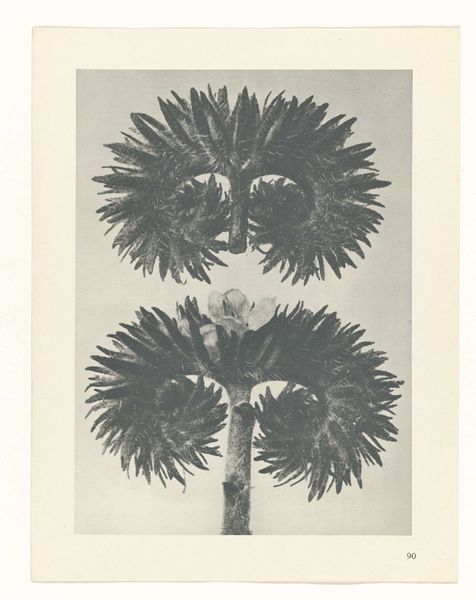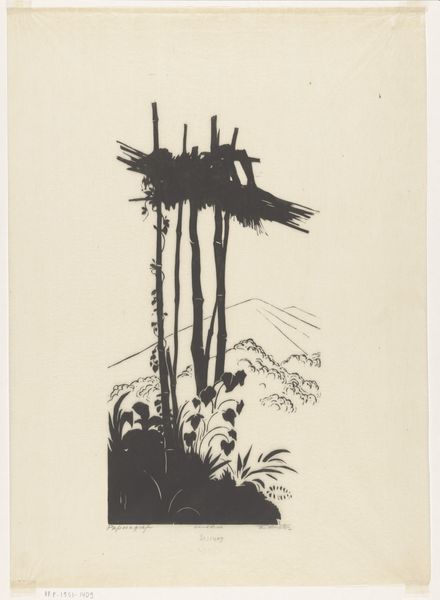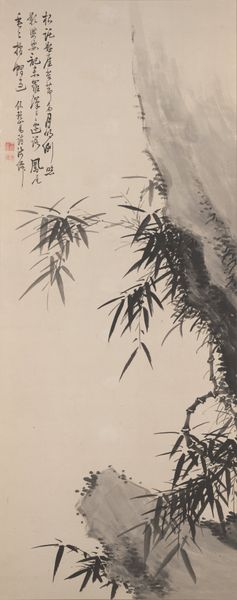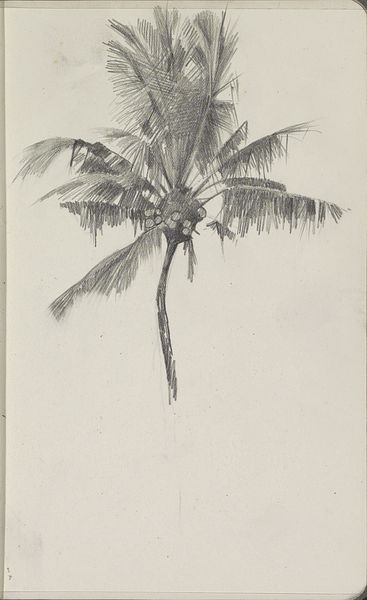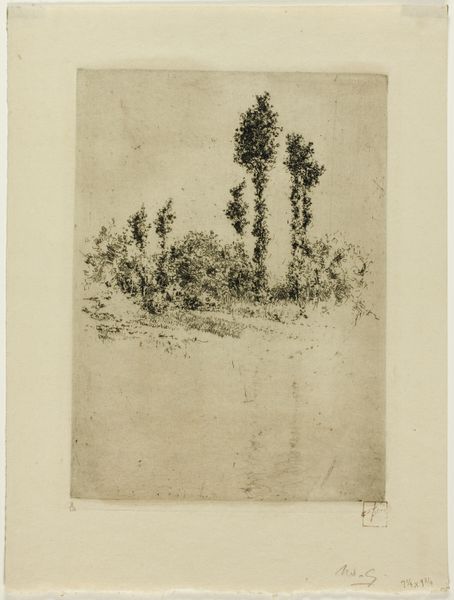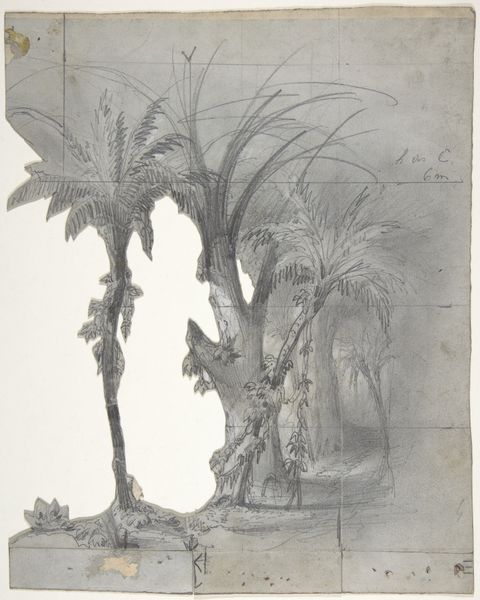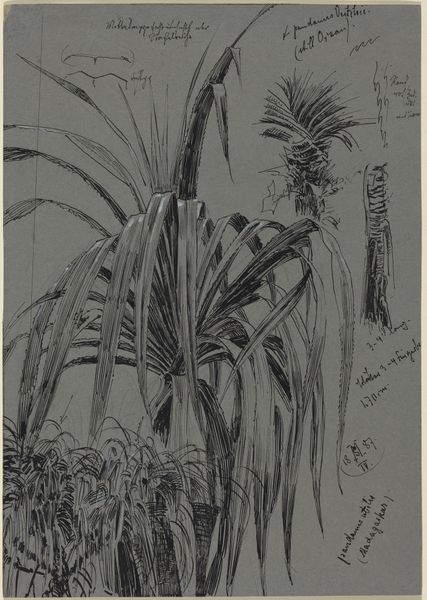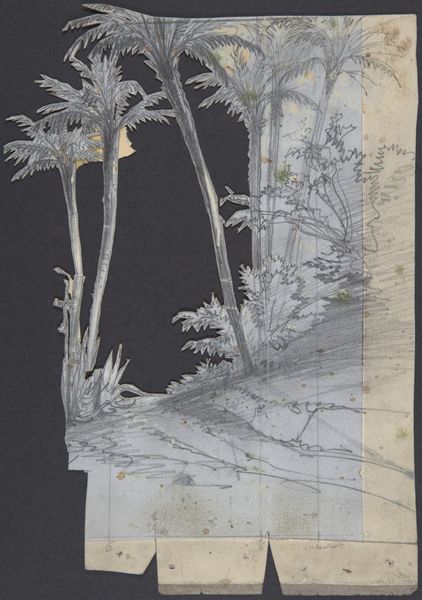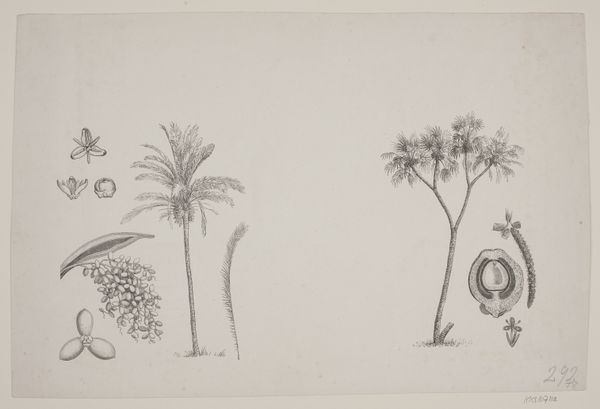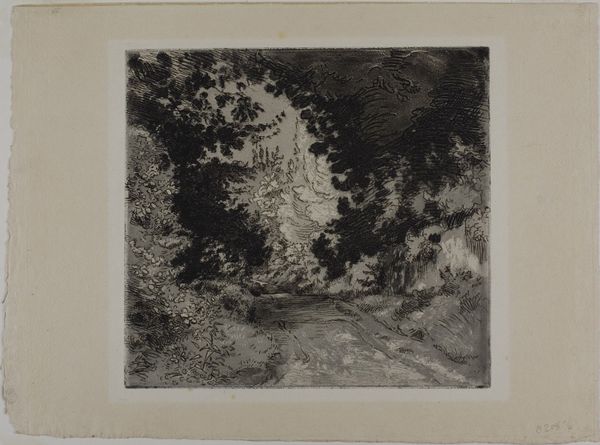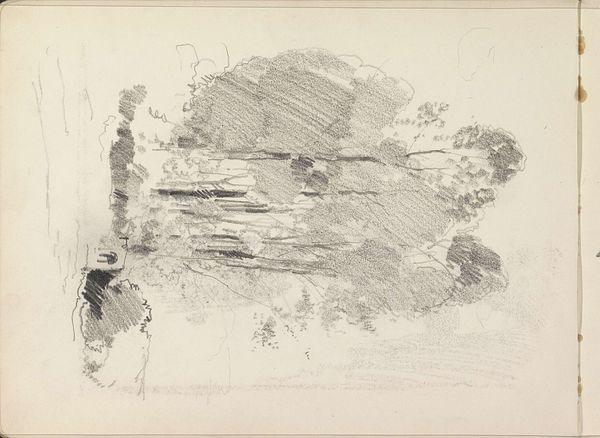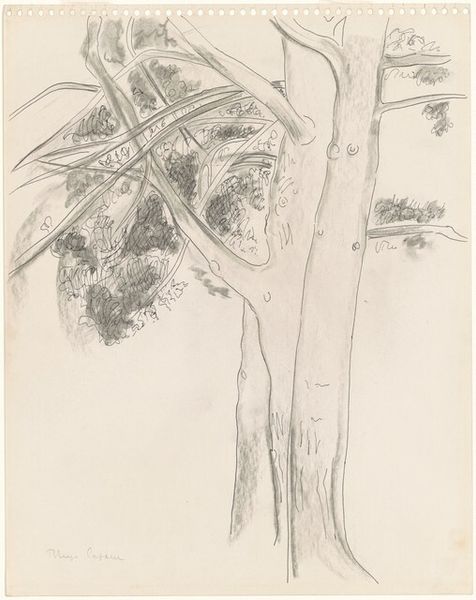
tempera, print, etching
#
tempera
# print
#
etching
#
landscape
#
line
#
realism
Dimensions: plate: 17.2 x 12.5 cm (6 3/4 x 4 15/16 in.) sheet: 25.2 x 20.2 cm (9 15/16 x 7 15/16 in.)
Copyright: National Gallery of Art: CC0 1.0
Curator: Look at this compelling print entitled "Palm Canyon (no.1)" created around 1920 by George Elbert Burr. Burr was a master of etching, and his landscapes often capture the essence of the American Southwest. What are your first impressions? Editor: The stark contrast immediately grabs me. There's something haunting about the solitary palm, almost like a survivor, framed by those imposing rock formations. It speaks to the vulnerability, yet the enduring strength, of life in a harsh environment. Curator: Exactly! Burr expertly uses the etching technique to emphasize these dramatic contrasts. Notice the fine lines creating texture in the rocks versus the smoother areas suggesting distant light. Burr produced over 300 etchings and drypoints, becoming known for his skill in depicting the deserts and canyons, often free from human presence. Editor: I see the near absence of human presence as powerful commentary itself. Consider the social narratives embedded in landscape art—the way the 'wild west' was often used to erase or diminish indigenous experiences. Is this untouched landscape also subtly reinforcing that narrative? Where are the people who lived and tended to this land? Curator: That's a crucial point. Burr was part of a larger movement of artists romanticizing the American landscape, sometimes consciously, sometimes not, in ways that served specific political and social agendas. The absence you point out highlights those omissions we must consider when viewing it. However, I find Burr's attention to geological detail noteworthy— the textures and stratifications of the rocks—an element many artists overlooked. He wasn't merely creating an aesthetic scene; he wanted to understand the environment's history inscribed in its stone. Editor: True, and that precision offers another layer of interpretation. He presents a specific place but refrains from specific histories beyond the natural evolution of the area. The palm is iconic, almost a defiant symbol within that geological timescale, reminding us of its relative ephemerality compared to stone. What sociopolitical structures allowed this type of romantic and, arguably, colonialist vision to rise to prominence in the arts? Curator: And perhaps the etching's monochromatic nature enhances its timelessness, divorcing it from any immediate cultural context, leaving us to confront our own preconceptions. Burr sold thousands of prints. He was part of that artistic movement we now question regarding authenticity and inclusion, yet his artistry holds intrinsic value in understanding art from an aesthetic, market-driven, and artistic perspective. Editor: Ultimately, works like "Palm Canyon" become sites where art history meets social responsibility, reminding us of the importance of interrogating what we see and what goes unseen. The image compels us to think critically about its relationship with cultural narrative as well as technique.
Comments
No comments
Be the first to comment and join the conversation on the ultimate creative platform.
